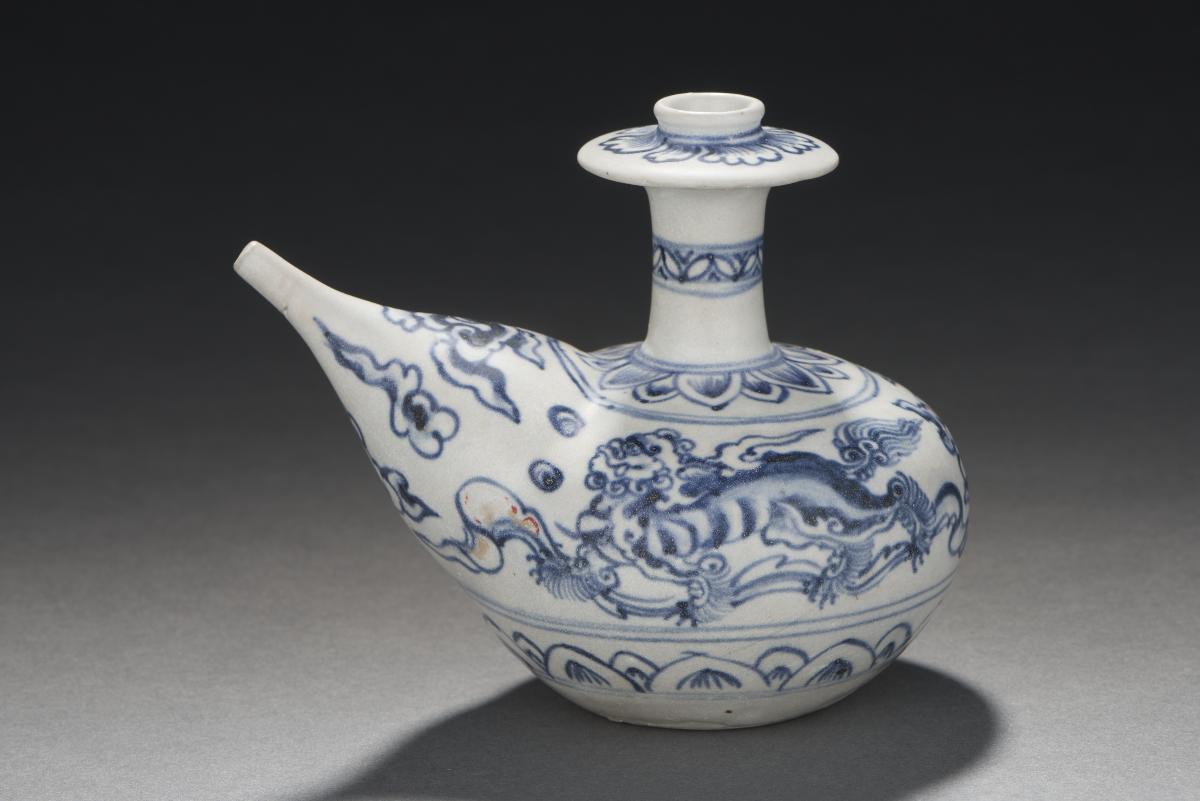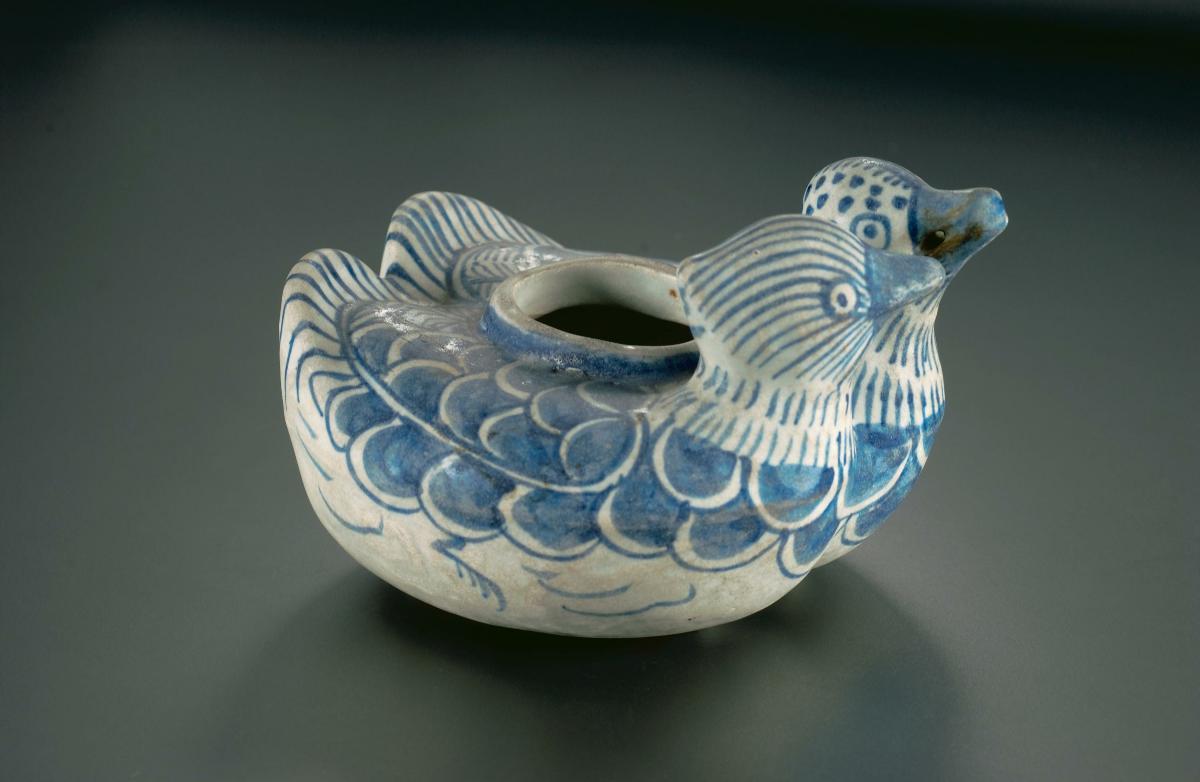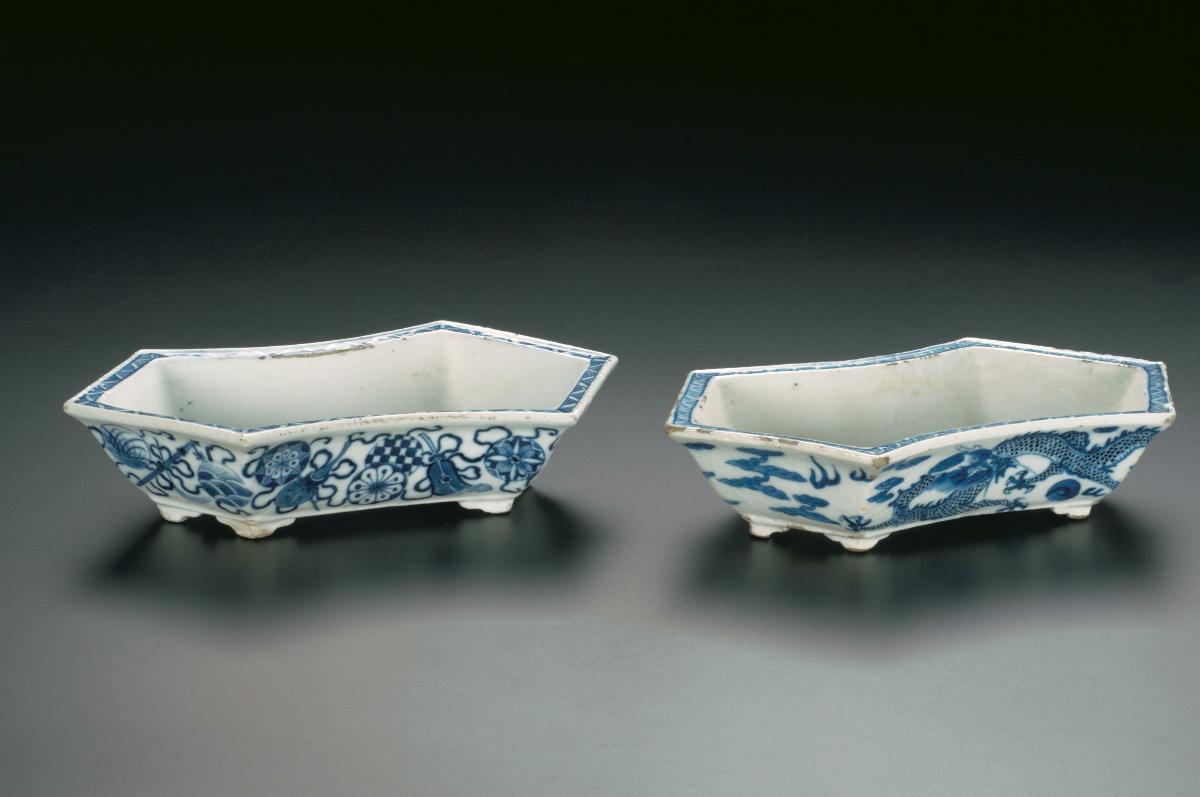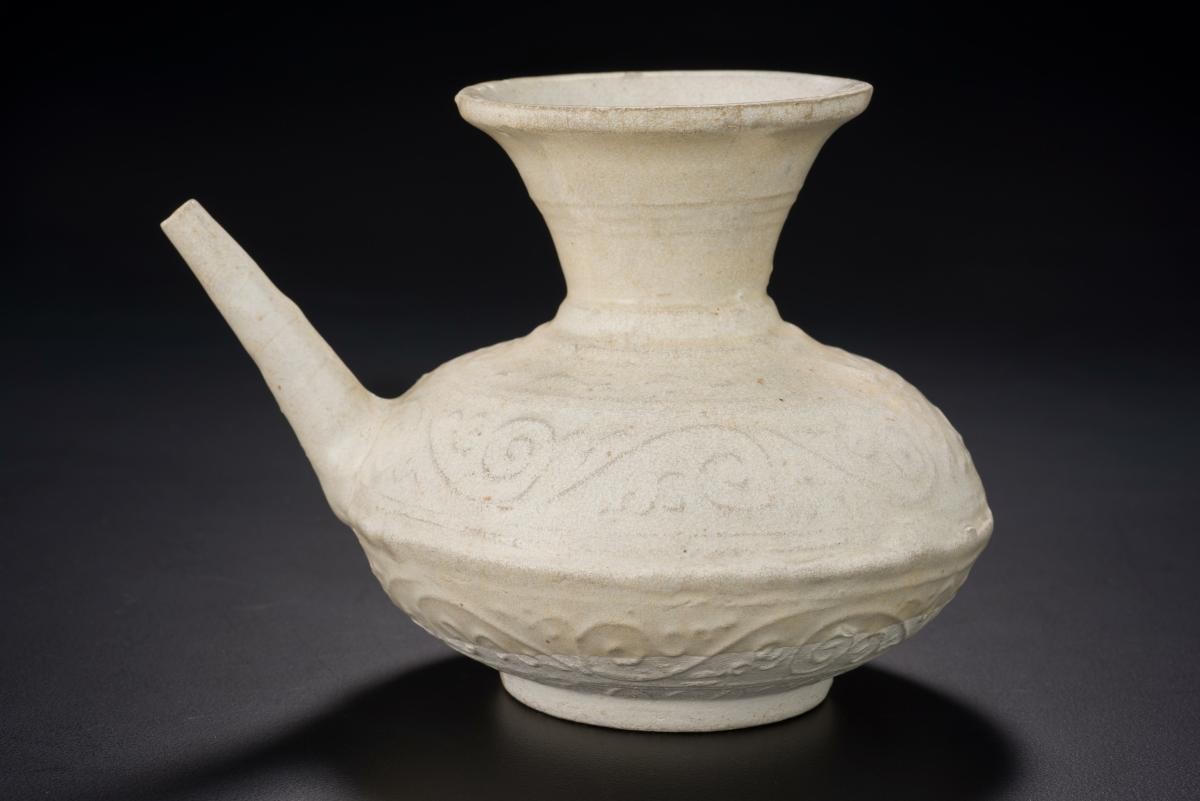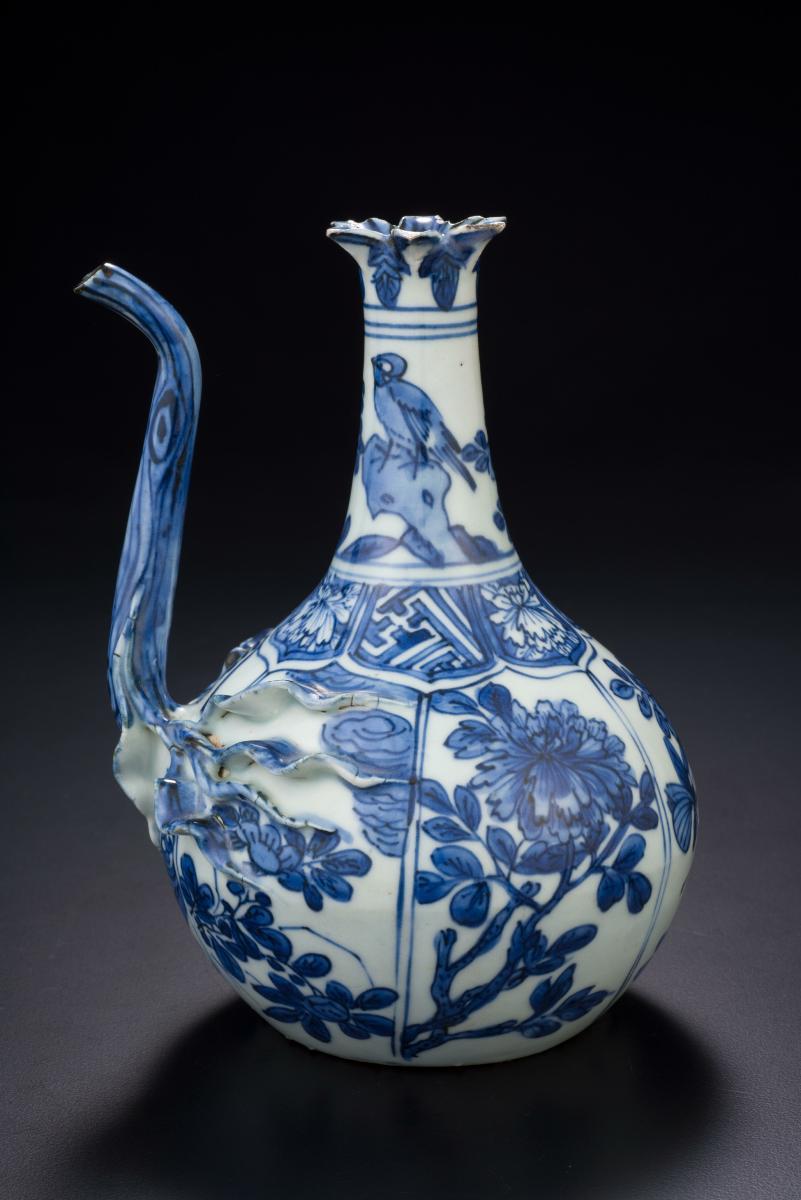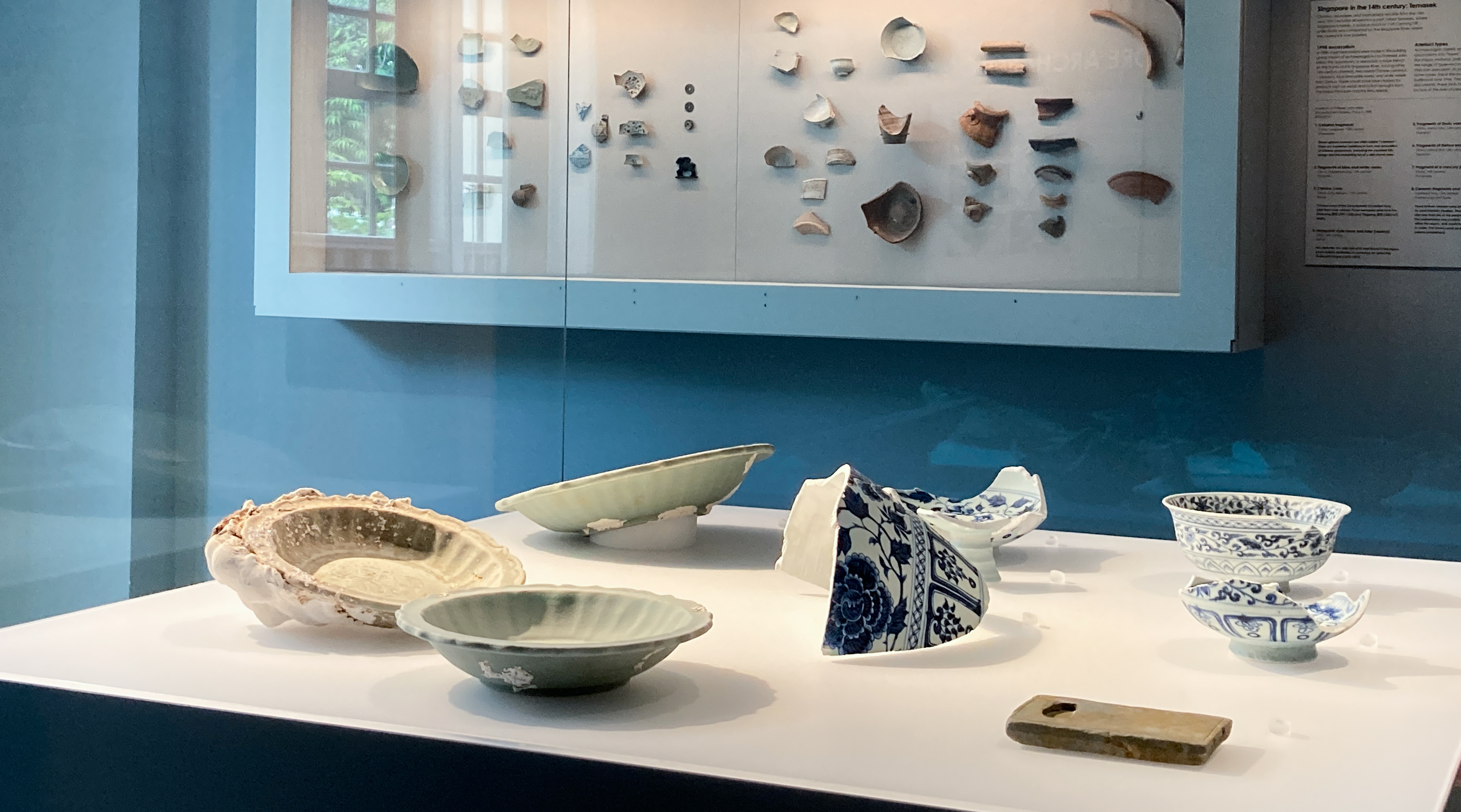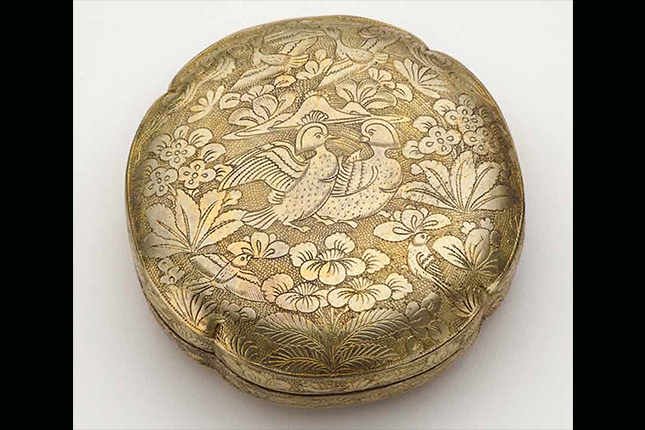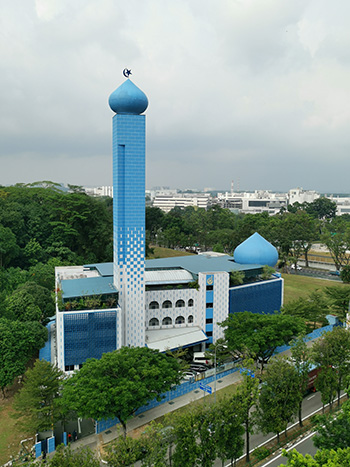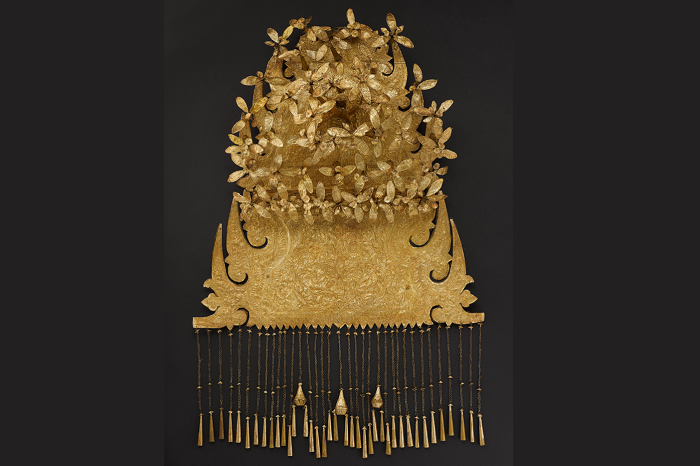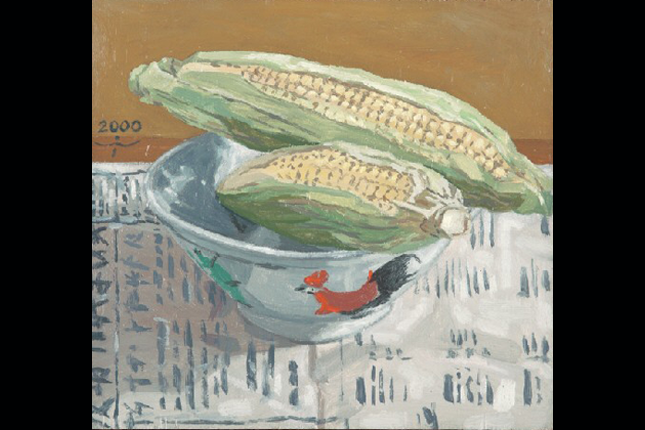This unusually small kendi (water pot) has a tapered spout and bold tones of underglaze blue decoration with traces of red enamel and gilding. Finely painted motifs of mythical lions amidst clouds are featured on the exterior. This form was popular in Southeast Asia, where local potters reproduced the shape in earthenware. Although heavily influenced by the Chinese ceramic tradition, Vietnam materials and potting styles are unique. Technically not ‘porcelain’, which is translucent and pure white, these stonewares are different in appearance from Chinese and other Southeast Asian ceramics. Vietnamese wares are typically more heavily potted and have an off-white clay body. Cobalt oxide could have been imported from West Asia via China to produce the blue tones.Vietnam entered the international trade during the 14th century and produced the greatest volume and variety of wares for Southeast Asia, particularly Indonesia, the Philippines and Malaysia. However, by the 16th century, due to intense competition from the Chinese kilns, the export of Vietnamese wares to these markets was greatly reduced.




